Ijraset Journal For Research in Applied Science and Engineering Technology
- Home / Ijraset
- On This Page
- Abstract
- Introduction
- Conclusion
- References
- Copyright
Advances in Monolithic Perovskite CIGS Tandem Solar Cells: A Path to High-Efficiency Photovoltaics
Authors: Wilis Negi, Ritula Thakur
DOI Link: https://doi.org/10.22214/ijraset.2025.66228
Certificate: View Certificate
Abstract
Monolithic perovskite/CIGS tandem solar cells represent a transformative approach to achieving high-efficiency photovoltaics with reduced environmental impact. This review focuses on recent advancements in perovskite/CIGS tandem architectures, highlighting their unique advantages, such as flexibility, lightweight design, and radiation hardness, which make them suitable for diverse applications, including space exploration and portable electronics. The integration of perovskite materials with copper indium gallium selenide (CIGS) offers a promising pathway to surpass the efficiency limits of single-junction cells by leveraging complementary bandgap tuning for enhanced spectral utilization. Recent progress includes improvements in interface engineering, absorber layer optimization, and transparent conductive electrodes, resulting in power conversion efficiencies exceeding 24%. Despite these advancements, challenges such as parasitic absorption, interfacial recombination, and scaling for large-area devices remain significant hurdles. This paper consolidates theoretical insights and experimental findings to provide a comprehensive analysis of the critical factors influencing the performance of perovskite/CIGS tandem solar cells. By addressing these challenges, this technology has the potential to redefine sustainable and efficient solar energy solutions for the future.
Introduction
I. INTRODUCTION
Photovoltaic (PV) technology remains the most effective means of converting solar energy into electricity by harnessing sunlight. Over the years, advancements in PV technology have led to the development of inorganic, organic, and hybrid solar cells. Inorganic photovoltaics (IPVs), using materials like silicon (Si), cadmium telluride (CdTe), and gallium arsenide (GaAs), dominate the market due to their efficiency, stability, and mature fabrication processes. On the other hand, organic photovoltaics (OPVs), made from polymers, dyes, and fullerenes, are lightweight and environmentally friendly but face challenges in efficiency and durability. Despite the widespread use of silicon-based cells with optimal bandgap ranges, innovations in multicrystalline silicon have further enhanced their performance. However, the inherent limitations of single-junction solar cells, capped by the Shockley-Queisser limit, necessitate novel solutions. Tandem solar cells, particularly those utilizing perovskite materials, have emerged as a game-changing technology. Perovskites exhibit excellent optoelectronic properties, tunable bandgaps, and compatibility with thin-film manufacturing, making them ideal for tandem configurations. Tandem solar cells, combining wide- and narrow-bandgap materials, efficiently capture a broader spectrum of sunlight, reduce thermal losses, and surpass single-junction efficiency limits [1]. This review explores the progress in monolithic perovskite tandem cells, focusing on their material advancements, architectural designs, and optimization strategies for achieving high power conversion efficiency and sustainability.
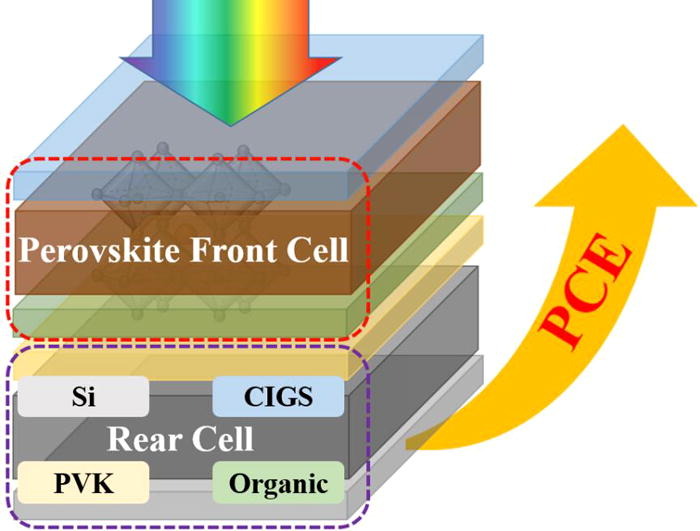
Fig 1 Structure of Perovskite-based Tandem Solar Cell
The importance of perovskite-based solar technologies lies in their potential to revolutionize the renewable energy sector. While traditional single-junction solar cells have made substantial progress, their efficiency is fundamentally limited by the Shockley-Queisser (S-Q) limit, which caps the theoretical power conversion efficiency (PCE) of single-junction devices at around 33% under standard conditions. Perovskite solar cells have already demonstrated impressive PCEs nearing this limit, showcasing their capability to compete with and surpass conventional photovoltaic technologies. To push beyond the S-Q limit, tandem solar cells, also known as multijunction solar cells, have emerged as a groundbreaking solution. These devices stack multiple semiconductors with different bandgaps to capture a broader range of the solar spectrum and minimize thermalization losses [2]. Within this framework, perovskite-based tandem solar cells represent a promising direction, offering a pathway to achieve efficiencies that surpass those of single-junction perovskite cells.
Monolithic tandem configurations, in particular, have gained prominence due to their compact design and potential for low-cost manufacturing. In these devices, a wide-bandgap perovskite top cell efficiently absorbs short-wavelength photons, while a narrow-bandgap bottom cell captures longer-wavelength photons. This arrangement optimizes solar energy utilization and overcomes efficiency bottlenecks associated with single-junction cells [3]. The idea of tandem solar cells, or multi-junction solar cells, was initially proposed in 1955 by Jackson [4]. Since then, these cells have been the subject of numerous theoretical and experimental investigations [5–7]. Over the past decade, significant progress has been made in improving the efficiency of two-terminal all-perovskite tandem solar cells, with efficiency increasing from 17% in 2016 [8] to more than 23% by 2022 [9]. Although monolithically integrated tandem solar cells offer notable efficiency improvements and potential cost reductions during manufacturing, the development of all-perovskite tandem technology is still at an early stage. Recent breakthroughs have enabled these tandem cells to surpass 25% efficiency, marking a step closer to their theoretical efficiency limits [10]. Despite their high efficiency, excellent optoelectronic properties, and cost-effectiveness, lead-based perovskite solar cells (PSCs) face challenges due to their toxicity and instability, which hinder their large-scale commercial viability. These limitations have motivated the exploration of lead-free perovskite alternatives that maintain many of the desirable properties of their lead-based counterparts while addressing environmental and health risks. Computational simulation has accelerated the advancement of high-efficiency lead-free tandem solar cells by providing a cost-effective approach to material and interface optimization, as well as performance prediction. This study focuses on the analysis, calibration, and optimization of a lead-free perovskite tandem solar cell [11]. To tackle the toxicity issue, this research employs lead-free perovskite materials for both the top and bottom cells. The absorber layer for the top cell, Cs2AgBi0.75Sb0.25Br6, with a bandgap of 1.8 eV, was reported by Meyer et al. in 2018 [12], while the bottom cell uses CsSnI3 with a bandgap of 1.3 eV, as introduced by Chen et al. in 2012 [13]. Recent findings indicate power conversion efficiencies (PCEs) of approximately 8% [14] and 9.6% [15] for CsSnI3-based PSCs, the highest among all lead-free inorganic perovskites. CsSnI3 exhibits excellent properties, such as a direct bandgap of 1.3 eV, a high absorption coefficient (∼104 cm?¹) in the visible range, thermal stability, and a low exciton binding energy of 10–20 meV, making it a promising candidate to overcome the efficiency limitations of lead-free materials [16].
However, CsSnI3 faces challenges due to the oxidation of Sn²? to Sn??, leading to rapid charge carrier recombination. To address this issue, interface engineering strategies, such as the inclusion of a ZnO layer between CsSnI3 and TiO2, have been employed to enhance the performance of CsSnI3-based perovskite solar cells [17].
SCAPS-1D is a simulation tool used for modeling the performance of photovoltaic devices, including single-junction and tandem solar cells. It operates under standard test conditions (STC), which include an irradiance of 1000 W/m², AM1.5G solar spectrum, and a temperature of 25°C (298 K). These conditions provide a consistent framework for evaluating solar cell performance.
This review paper addresses the engineering and scientific challenges associated with tandem solar cell technology, which is currently one of the most promising architectures for enhancing photon absorption and power conversion efficiency (PCE) in photovoltaic (PV) systems. The focus is on perovskite-based tandem cells, specifically perovskite/CIGS configurations, with an emphasis on comparing their theoretical efficiencies. The paper critically examines the state-of-the-art devices, particularly perovskite/silicon tandem cells, which have historically been the first to be developed and studied. Despite their early success, these cells face several drawbacks, which have prompted the exploration of next-generation heterojunction solar cells. The review delves into the limitations of perovskite/CIGS and perovskite/perovskite tandem cells, highlighting the ongoing challenges in their development and offering insights into future directions for improving their performance and commercial viability.
II. PEROVSKITE GROUP MATERIALS
Perovskite materials derive their name from Russian mineralogist Lev Perovski and are characterized by their distinct ABX3 crystal structure.
This configuration allows a variety of elements to occupy the A, B, and X sites, leading to diverse properties and applications [18]. The A and B components are typically cations, while X is often a halide or oxide. While natural perovskites are rare, synthetic versions span a broad range of compositions, including hybrid organic-inorganic, metal-free, and even noble gas variants. The ability of perovskites to exhibit phenomena such as superconductivity, magnetoresistance, and spintronics has made them a focal point of multidisciplinary research [19,20].
In photovoltaics, perovskites stand out for their tunable bandgaps, high absorption coefficients, and long carrier lifetimes, enabling significant light-to-electricity conversion efficiencies. Since their first use in solar cells in 2009, where an efficiency of 3.8% was achieved [21], they have undergone rapid development, reaching efficiencies exceeding 25% in 2021 [22,23]. Key to their performance are features like broad absorption spectra and effective charge separation mechanisms. However, these materials face challenges, primarily their susceptibility to degradation under environmental stressors such as moisture and heat. Recent research efforts have focused on enhancing stability, including the use of surface passivation techniques, 2D additives [24], and quantum dots [25].
III. PEROVSKITE MATERIALS FOR TANDEM SOLAR CELLS
Perovskite materials, designed with customized bandgaps, play a crucial role in tandem solar cell applications. These materials typically feature wide-bandgaps above 1.55 eV and narrow-bandgaps below 1.35 eV, enabling efficient energy harvesting in tandem configurations. Hybrid perovskites possess a range of beneficial properties, such as direct bandgaps, high optical absorption, balanced charge transport, defect resilience, extended carrier lifetimes and diffusion lengths, low exciton binding energies, and robust grain boundaries [26-29]. These unique optoelectronic attributes stem from the distinctive electronic structure of perovskites, which contribute to achieving high open-circuit voltages (Voc) and enhanced efficiencies in perovskite solar cells (PSCs).
The tunability of perovskite bandgaps is accomplished by adjusting the composition of A-site cations (e.g., methylammonium (MA), formamidinium (FA), cesium, and rubidium), B-site cations (e.g., lead and tin), and X-site anions (e.g., iodide, bromide, and chloride). This compositional flexibility allows for precise bandgap engineering, enabling the development of subcells tailored to specific spectral ranges [30-34]. Hybrid perovskites are also economically viable, abundant, and compatible with large-scale production. Moreover, these materials can be fabricated on flexible substrates using low-temperature solution-based processes, making them ideal for cost-efficient mass production [35].
A. Wide-Bandgap Perovskite Top Cell
Metal halide perovskites (MHPs), defined by the ABX3 formula, exhibit tunable bandgaps influenced by A-site cations (MA, FA, Cs, Rb), B–X bond angles, and halide ions (I, Br, Cl) [36], [37]. These properties allow customization of bandgaps from ~1.1 eV to ~3.0 eV, suitable for tandem solar cells (TSCs). Low-temperature processing (<150 °C) preserves subcells, while features like high absorption coefficients and long carrier diffusion lengths enhance performance. Wide-bandgap perovskites like MAPbI3 enable efficiencies exceeding 27% in TSCs but suffer from environmental instability [38], [39]. Adjusting halide content tunes the bandgap (1.55–2.3 eV), though excessive bromide induces halide segregation, reducing stability.
B. Narrow-Bandgap Perovskites for Bottom Cells
Narrow-bandgap perovskites in TSCs achieve high efficiency and cost-effective fabrication. Tin (Sn) replaces lead (Pb) to reduce bandgaps, with Sn–Pb alloys reaching 1.2 eV, ideal for spectrum utilization [40,41]. Challenges include Sn2+ oxidation and short carrier lifetimes. FA0.6MA0.4Sn0.6Pb0.4I3 combines FA and MA to achieve a 1.25 eV bandgap, yielding 17.8% PCE in single cells and 21% in 4T tandems [42]. Narrower bandgaps (e.g., MASn0.8Pb0.2I3 at 1.19 eV) offer potential but lower efficiency (<10%). A-site cation adjustments, like FA+ or Cs+, improve stability and efficiency [43,44].
“The study highlighted in [45] focuses on addressing a persistent challenge in Pb–Sn perovskite solar cells (PSCs), specifically the limitations associated with the commonly used hole transport layer (HTL) Poly(3,4-ethylenedioxythiophene): poly (styrene sulfonate) (PEDOT: PSS). Despite its widespread use, PEDOT: PSS exhibits drawbacks that hinder the performance and stability of Pb–Sn PSCs. To mitigate these issues, the researchers employed ammonium sulfide (AS) as a multifunctional modifier at the PEDOT: PSS/perovskite interface.”
The inclusion of AS in the device architecture yielded multiple benefits. It improved the crystallization of the perovskite layer by forming PbS nucleation sites, which contributed to enhanced film quality. Additionally, the acidic nature of PEDOT: PSS, a factor that can negatively impact device stability, was neutralized through its reaction with AS. This modification also optimized the energy levels of PEDOT: PSS, promoting more efficient charge carrier transport across the HTL/perovskite interface.
As a result of these enhancements, the single-junction Pb–Sn PSCs achieved a notable power conversion efficiency (PCE) of 24.23% in reverse scanning and 23.84% in steady-state testing. Moreover, when applied to all-perovskite tandem solar cells, the AS modification contributed to a remarkable efficiency of 27.48%. These findings underscore the potential of ammonium sulfide as a versatile and effective interface engineering strategy for advancing the performance of Pb–Sn perovskite solar cells while also offering insights into improving tandem solar cell architectures.
“The study in [46] introduces a dual-layer SnO2-based inorganic electron transport layer (IETL) to enhance the efficiency and stability of perovskite solar cells (PSCs). This structure combines solution-processed SnO2 nanocrystals with a dense SnO2 layer deposited via atomic layer deposition (ALD), ensuring a continuous film and reducing ion migration. The dual-layer design achieved a notable power conversion efficiency (PCE) of 23.0%, comparable to C60-based devices, while demonstrating superior thermal stability. After 1000 hours at 85 °C and 10% humidity, the efficiency dropped by only 18%, compared to 36% for C60-based structures. This advancement underscores the potential of dual-layer SnO2 for scalable, high-performance PSCs and tandem cells. Fig 2 compares performance parameters between two electron transport layers (ETLs): C60/BCP and dual-layer SnO?. The dual-layer SnO? configuration demonstrates superior thermal stability and higher efficiency compared to the conventional C60/BCP-based structure.”
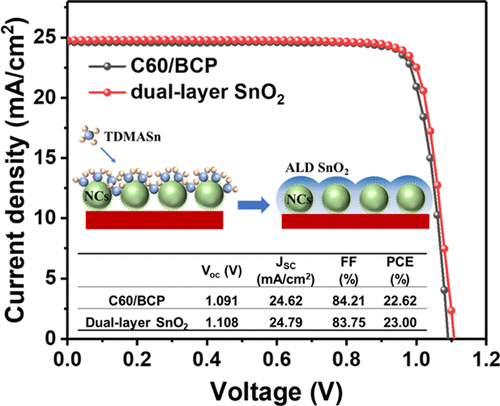
Fig 2. Performance Parameters of C60/BCP & dual-layer SnO2
“The research in [47] explores the performance enhancement of perovskite solar cells (PSCs) through a bifacial structure, maintaining the conventional absorber and electron transport layers (ETL). While PSCs are known for their high efficiency, ease of synthesis, and affordability, their progress is hindered by stability issues and the use of lead. Using SCAPS simulation, the study investigates the effects of varying doping concentrations in the ETL and HTL, revealing the benefits of transitioning from monofacial to bifacial configurations.
The optimized bifacial PSC structure achieves a power conversion efficiency (PCE) of 27.90% for light incident on the ETL side and 19.86% for light from the HTL side. The device also records a high open-circuit voltage (VOC) of 1.18 V, a fill factor (FF) of 82.24%, and a current density (JSC) of 27.12 mA/cm², with a bifaciality factor of 71.18%. These improvements demonstrate the significant impact of optimizing individual layers and adopting a bifacial design.”
The findings underline the potential of bifacial PSCs to achieve high efficiency while leveraging light from both sides, offering a pathway to address existing challenges in PSC technology and advancing next-generation photovoltaics. Fig 3 illustrates the structure of a solar cell based on ITO/TiO?/perovskite/Cu?O/ITO. It also shows the variation in performance metrics like short-circuit current density (Jsc), open-circuit voltage (Voc), fill factor (FF), and power conversion efficiency (PCE) across different thicknesses of the perovskite absorber layer.
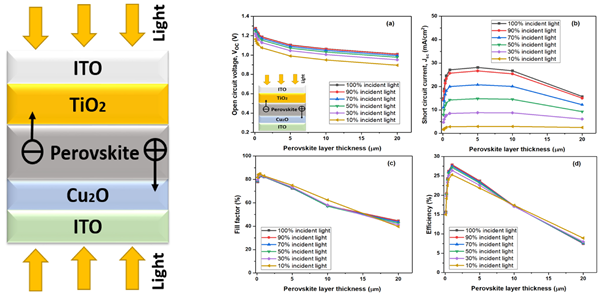
Fig 3 ITO/TiO2/perovskite/Cu2O/ITO Device Structure & Variation in performance parameters for the incident solar spectrum from the ETL side in the range of 100–20,000 nm of absorber layer thickness.
“The study in [48] addresses the challenges in integrating fluorescent down-conversion layers into perovskite solar cells (PSCs) by employing a novel dual electron transport layer (ETL) strategy. This approach sandwiches Cd-CsPbCl3:Mn2+ luminescent quantum dots between the ETLs, effectively preventing inter-diffusion with the perovskite absorber layer. The dual-layer design not only optimizes the energy level alignment at the interface but also enhances nucleation and crystallization of perovskite films, leading to improvements in device stability and performance.”
The strategy results in significant enhancements in open-circuit voltage (VOC) and fill factor (FF), reaching values of 1.181 V and 81.14%, respectively, and achieving a power conversion efficiency (PCE) of 24.32% with improved light stability. Additionally, the incorporation of dual fluorescent conversion layers further boosts ultraviolet response, achieving a record PCE of 24.63% for luminescent conversion cells. This innovative approach highlights a promising direction for developing efficient and stable photoluminescence-based PSCs. Fig 4 presents the completed structure of a perovskite solar cell (PSC) and highlights improvements in its fabrication process. Key advancements include enhanced stability and efficiency through the use of optimized layer compositions and an anti-reflective coating.
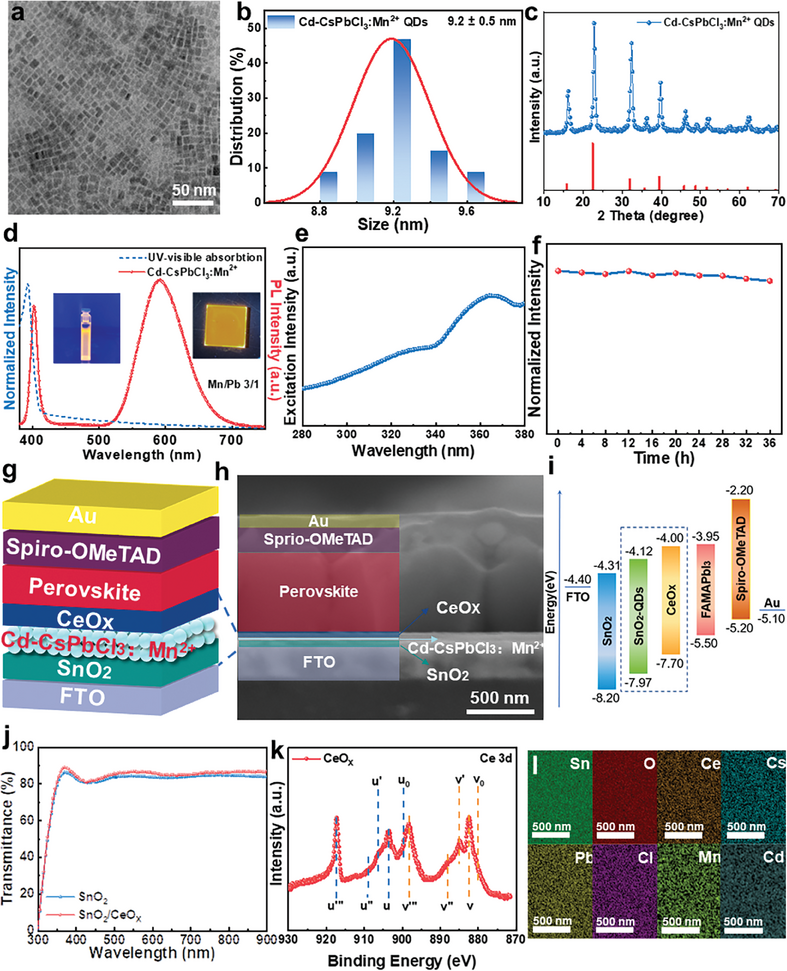
Fig 4 The Completed Device Structure of PSC
“The research in [49] addresses key challenges in perovskite solar cell (PSC) manufacturing by introducing a novel method for producing high-quality perovskite films at room temperature (RT). By carefully regulating the perovskite composition (Csx(FA0.92MA0.08)1−xPb(I0.92Br0.08)3) and incorporating the organic linker oleylamine (OAm), the study achieves a stable α-phase without requiring high-temperature annealing, as validated through in situ X-ray monitoring. This innovative approach leads to a remarkable efficiency of 23.2%, which increases to 24.4% with an anti-reflective coating, surpassing previous efficiencies achieved through room or low-temperature processing. Additionally, the method demonstrates versatility by enabling the fabrication of perovskite films on unconventional substrates, such as natural leaves. These advancements not only stabilize the perovskite structure at RT but also open up new possibilities for sustainable and adaptable photovoltaic applications.”
“The study in [50] explores the influence of precise layer thickness control on the efficiency of Pb-based perovskite solar cells (PSCs) through simulation analysis. The device architecture includes four layers: FTO (front contact), ZnO (electron-transport layer), CH?NH?PbI? (perovskite absorber), and CuI (hole-transport layer). Simulations revealed that optimizing the absorber layer thickness to 1000 nm yields a peak efficiency of 24.41%. However, increasing the ZnO layer thickness beyond 80 nm adversely affects performance, while variations in FTO and CuI thicknesses between 100 and 1000 nm have minimal impact. The study also highlights the temperature sensitivity of PSCs, noting efficiency losses at elevated temperatures due to decreased open-circuit voltage (Voc). These findings underscore the importance of precise thickness management in optimizing device performance and achieving high efficiency in Pb-based PSCs.”
“The research presented in [51] investigates lead-free, eco-friendly perovskite solar cells (PSCs) using Cs?PtI? as the light absorber and NiO as the hole transport layer (HTL). Through detailed optimization of parameters such as layer thickness, doping concentration, defect density, and radiative recombination effects, the study demonstrates significant advancements in device performance. It emphasizes the critical impact of interfacial defects, particularly at the HTL and absorber layer interface, on efficiency. The research further examines variations in metal back contacts, temperature, light intensity, and spectrum to understand their influence on performance. The optimized structure, comprising FTO/ZnO/Cs?PtI?/NiO/Au, achieves impressive metrics, including a high open-circuit voltage (Voc) of 1.34 V, short-circuit current density (Jsc) of 32.34 mA/cm², fill factor (FF) of 75.70%, and power conversion efficiency (PCE) of 32.70%. These findings highlight the potential of Cs?PtI?-based PSCs in advancing sustainable solar energy solutions. Fig 5 displays the architecture and energy band diagram for a lead-free perovskite solar cell. Optimizations in layer design, such as interface layers and doping concentrations, significantly enhance efficiency and reduce recombination losses.”
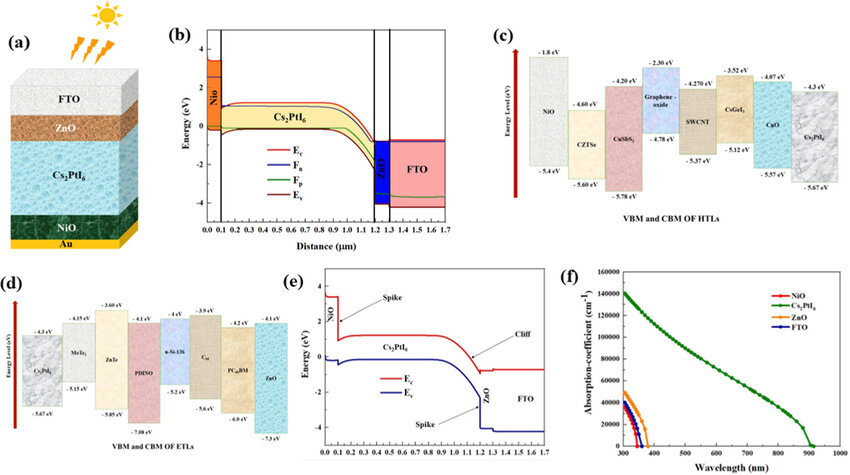
Fig 5 (a) Device Architecture and (b) Energy Band Diagram of the Proposed Solar Cell
“The study presented in [52] focuses on optimizing lead-free perovskite solar cells, specifically utilizing methyl ammonium tin iodide (MASnI3) as the absorber material. This research highlights the significant role of both the absorber and interface layers in enhancing device performance. The authors explore the use of graphene as an interface layer between the hole transport and absorber layers, while employing ZnO:Al and 3C-SiC for the interface between the absorber and electron transport layers. Through careful adjustment of layer thickness and minimization of defect densities, the optimized device structure achieves impressive theoretical power conversion efficiencies of 30.43%, with fill factors of 89.30%, a current density of 29.40 mA/cm², and a voltage of 1.1591 V.
These results position MASnI3 as a promising non-toxic material for perovskite solar cells, contributing to the development of sustainable energy solutions. This study underscores the potential of tin-based perovskites for future renewable energy applications. Fig 6 shows the device structure and current-voltage (J-V) characteristics of a proposed lead-free PSC. The performance improvements stem from the integration of advanced interface layers and optimized absorber materials.”
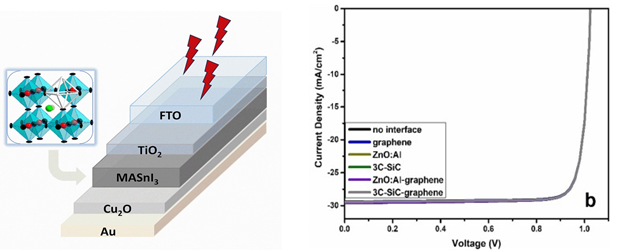
Fig 6 Device Architecture & J-V Characteristics of the Proposed Solar Cell
IV. PEROVSKITE/CIGS SOLAR CELLS
Perovskite/CIGS tandem solar cells are gaining traction as an alternative to silicon-based tandems, offering advantages like flexibility, lightweight design, and reduced environmental impact. Unlike silicon, CIGS (Copper Indium Gallium Selenide) can be fabricated on flexible substrates, enabling applications in curved or portable devices. These tandems benefit from the radiation hardness of CIGS, making them suitable for harsh environments, including space exploration.
The first monolithic perovskite/CIGS tandem device demonstrated efficiencies of around 10.98% by employing a multilayer structure. Subsequent research has achieved efficiencies exceeding 24%, driven by improvements in interface engineering and absorber quality. For instance, the inclusion of rubidium fluoride post-deposition treatments has enhanced the performance of the CIGS layer. Transparent conductive layers, recombination zones, and bandgap engineering remain critical areas of focus. However, challenges such as parasitic absorption in transparent electrodes and scaling large-area devices persist. Techniques like roll-to-roll processing and laser scribing offer pathways to industrial scalability, while advanced simulations guide further optimization of layer thickness and doping profiles.
“The paper presented in [53] explores the use of multi-junction solar cells as a promising solution to meet the growing energy demand. Perovskite solar cells (PSCs) have garnered significant attention due to their exceptional optical and electrical properties. The study proposes a tandem structure that combines a conventional PSC as the top cell with a twin-layered absorber of CIGS-GeTe for the bottom cell. Simulation results indicate that this perovskite/CIGS-GeTe tandem cell achieves a remarkable power conversion efficiency (PCE) of 35.86%. Additionally, the device exhibits a high open-circuit voltage (Voc) of 2.01 V, demonstrating the potential of this configuration for significantly improving the overall performance of solar cells. This research contributes to the development of more efficient multi-junction solar cells with enhanced energy conversion capabilities.
“The paper in [54] delves into the rapid rise of perovskite and CIGS tandem solar cells as highly efficient photovoltaic devices. It highlights recent advancements in improving their efficiency by fine-tuning the thickness of various layers with tunable bandgaps. The upper perovskite cell is selected for its exceptional light absorption capabilities and favorable optoelectronic properties, while the bottom CIGS cell, with its tunable bandgap and low thermal requirements, complements the overall performance. Through numerical simulations using wxAMPS software, the proposed model demonstrates impressive results, with a power conversion efficiency of 40.02%, an open-circuit voltage (Voc) of 1.8675 V, a current density (Jsc) of 23.2146 mA/cm², and a fill factor (FF) of 92.3152%. These results affirm the potential of this tandem structure for achieving superior efficiency in solar cell technology. Fig 7
presents a schematic of a perovskite/CIGS tandem solar cell along with its J-V characteristic curve. The tandem configuration effectively utilizes the complementary bandgaps of the perovskite and CIGS layers to achieve high efficiency.”
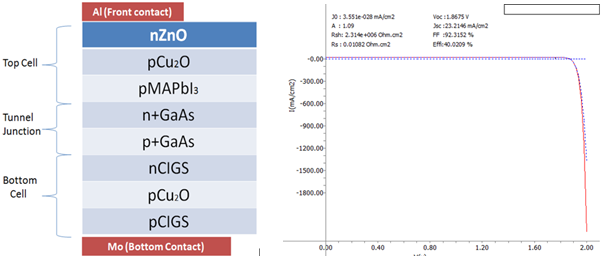
Fig 7 Perovskite/CIGS Tandem Solar Cell Schematic & J-V Characteristic Curve of Tandem Solar Cell
“The research presented in [55] focuses on enhancing the conversion efficiency (CE) of a proposed copper indium gallium di-selenide (CIGS) thin film solar cell (TFSC) by incorporating perovskite alongside CIGS. The study introduces a back surface field (BSF) and utilizes molybdenum (Mo) as a back contact to improve performance. Using the SCAPS-1D simulation tool, the researchers analyze the impact of various factors on the photovoltaic performance of the perovskite/CIGS TFSC with BSF. The optimized device structure, consisting of BaSi2/CIGS/Cs2AgBiBr6/TiO2/FTO/Mo/substrate, achieves a CE of 28.94%. The study further investigates the effects of varying the thickness of the CIGS layer (0.9 µm) and the BSF (0.5 µm), as well as factors such as acceptor density, defect density, and temperature, to optimize the efficiency of the device. This work contributes valuable insights into enhancing the performance of perovskite/CIGS tandem cells for improved solar energy conversion.
Fig 8 illustrates the simplified formation of a perovskite/CIGS tandem cell and its energy band diagram. It highlights the role of layer thickness and doping in optimizing the photovoltaic properties of the cell.”
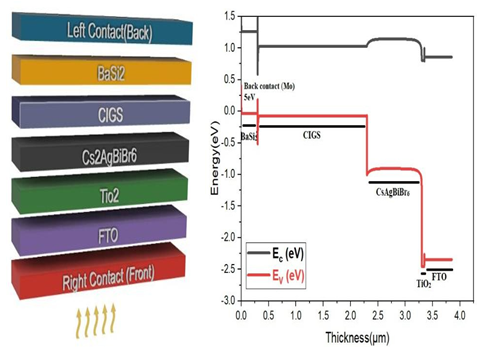
Fig 8 (a) Simplified formation of Proposed cell (b) energy band diagram

Fig 9 Impact of CIGS thickness variation on (a) Voc and Jsc (b) FF and efficiency
Fig 9 shows the impact of varying CIGS layer thickness on the performance parameters (Voc, Jsc, FF, and PCE) of a tandem cell. Optimizing the absorber thickness enhances efficiency and maintains a balance between electrical and optical performance.
“The paper in [56] explores the recent advances in tandem solar cells (TSCs) based on organic–inorganic halide perovskites, focusing on their integration with copper–indium–gallium–selenide (CIGS) as bottom subcells. The combination of perovskite and CIGS allows for optimal bandgap tuning, enabling maximum photocurrent generation, making these tandem cells highly efficient. The thin-film nature of both materials also offers significant flexibility, which enhances their potential for lightweight and flexible applications. The review highlights the progress in both two-terminal (2T) and four-terminal (4T) perovskite/CIGS TSCs, with efficiencies of 24.2% and 29.0%, respectively. Key factors such as conformal coating techniques, current matching, and transparent electrode materials are discussed in detail. The paper also emphasizes the successful development of large-area minimodules on both rigid and flexible substrates. In addition, it covers the technoeconomic and environmental aspects of these technologies. Finally, the review identifies the remaining challenges and suggests future directions for further improving the performance and scalability of perovskite/CIGS TSCs.”
“The paper presented in [57] investigates an all-inorganic, lead-free tandem photovoltaic (PV) cell composed of two sub-cells: a top CsSn0.5Ge0.5I3 perovskite-based cell and a bottom CIGS-based cell. Using the SCAPS-1D simulator, the researchers optimize the device by varying the thicknesses of key layers in both sub-cells. The top sub-cell features a wide bandgap CsSn0.5Ge0.5I3 perovskite absorber layer, ZnO as the electron transport layer (ETL), and NiO as the hole transport layer (HTL) to ensure efficient charge mobility and chemical durability. For the bottom sub-cell, the CIGS absorber, Spiro-OMeTAD HTL, and TiO2 ETL are selected for their favorable electronic properties and stability. After optimizing the layer thicknesses for current matching, the final tandem structure achieves a power conversion efficiency (PCE) of 38.39%, a fill factor of 83.4%, an open-circuit voltage of 2.48 V, and a short-circuit current density of 18.64 mA/cm². These results surpass recent literature benchmarks, indicating the potential of this all-inorganic, lead-free tandem structure for efficient, low-cost, and sustainable solar energy production.”
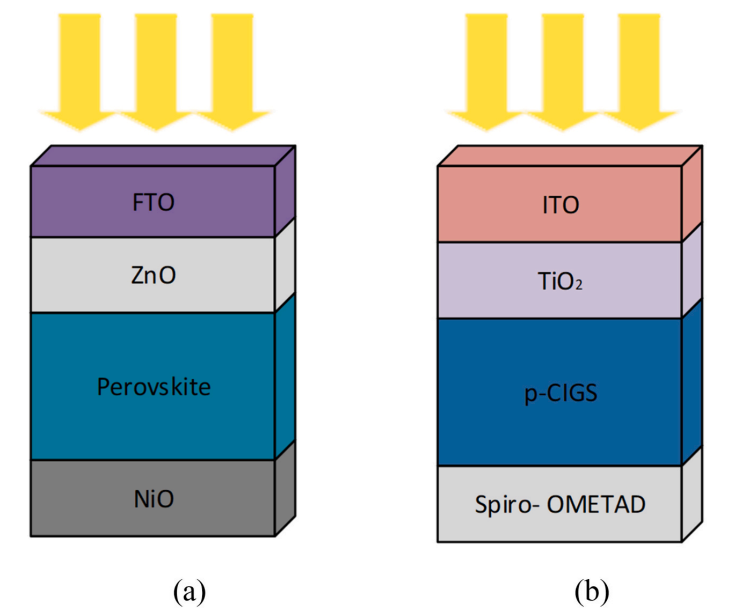
Fig 10 The Proposed Top Cell (a) and Bottom Cell (b)
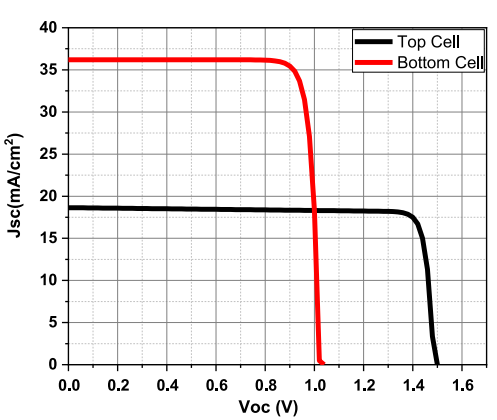
Fig 11 Standalone top and bottom cell’s J-V characteristics after individual optimization
These figures illustrate the proposed tandem solar cell architecture and its performance metrics. Fig 10 shows the individual structures of the top cell, utilizing a wide-bandgap perovskite absorber, and the bottom cell, featuring a CIGS absorber. Fig 11 presents the J-V characteristics of the standalone top and bottom cells after optimization. The results demonstrate the capability of both sub-cells to achieve high efficiency individually, which is further enhanced when integrated into a tandem configuration through optimized material and layer designs.
“The paper presented in [58] focuses on enhancing the power conversion efficiency (PCE) of tandem solar cells by combining a perovskite solar cell (PSC) with a Copper Indium Gallium Selenide (CIGS) based solar cell (CSC). Both sub-cells are individually optimized and integrated into a PSC/CSC tandem device using SCAPS-1D simulations. The PSC utilizes a highly stable perovskite absorber, Cs0.15MA0.15FA0.70Pb(I0.85Br0.15)3, which is known for its optical properties and stability. A novel approach is introduced with the use of barium stannate (BaSnO3) as the electron transport layer (ETL), alongside NiO as the hole transport layer (HTL), yielding impressive performance with a short-circuit current density of 23.89 mA/cm², an open-circuit voltage of 1.48 V, a fill factor of 88.92%, and a PCE of 31.53%. The study also explores the performance of a PSC without HTL but with BaSnO3 as ETL, which further improves the efficiency. The optimized tandem device, which combines this HTL-free PSC with a CIGS bottom cell, achieves a PCE of 39%, the highest value predicted for such a structure. This research offers valuable insights into the development of high-efficiency solar cells and contributes to the ongoing progress in tandem device fabrication. Fig 12 combines the device architecture and J-V characteristics of an optimized tandem solar cell. It includes a perovskite top cell and a CIGS bottom cell, achieving maximum efficiency by minimizing losses and enhancing current matching.”

Fig 12 Device Architecture & J-V Characteristics of the Proposed Tandem Solar Cell
Table I Performance Comparison of Solar Cells
|
References |
Cell Type |
PCE (%) |
Voc (V) |
Jsc (mA/cm²) |
FF (%) |
|
[45] |
Single-junction Pb–Sn PSC |
24.23 |
0.95 |
26.10 |
85.23 |
|
[45] |
All-perovskite tandem PSC |
27.48 |
1.75 |
18.10 |
86.00 |
|
[46] |
Dual-layer SnO? PSC |
23.0 |
1.05 |
25.60 |
87.00 |
|
[47] |
Bifacial PSC (ETL side) |
27.90 |
1.18 |
27.12 |
71.18 |
|
[47] |
Bifacial PSC (HTL side) |
19.86 |
1.10 |
22.50 |
70.50 |
|
[48] |
Double ETL + dual luminescent PSC |
24.63 |
1.18 |
27.50 |
79.50 |
|
[49] |
Optimized PSC |
23.2-24.4 |
1.20 |
26.80 |
80.30 |
|
[50] |
Pb-based PSC (optimized thickness) |
24.41 |
1.25 |
27.90 |
83.20 |
|
[51] |
Lead-free Cs?PtI? PSC |
32.70 |
1.34 |
32.34 |
75.70 |
|
[52] |
Lead-free MASnI? PSC (theoretical) |
30.43 |
1.16 |
29.40 |
89.30 |
|
[52] |
Perovskite/CIGS-GeTe tandem PSC |
35.86 |
2.01 |
21.50 |
90.00 |
|
[53] |
Perovskite/CIGS tandem PSC |
40.02 |
1.87 |
23.21 |
92.32 |
|
[54] |
Perovskite/CIGS thin film PSC |
28.94 |
1.10 |
25.00 |
82.50 |
|
[55] |
2T Perovskite/CIGS tandem PSC |
24.20 |
1.45 |
22.00 |
80.00 |
|
[56] |
4T Perovskite/CIGS tandem PSC |
29.00 |
1.70 |
23.50 |
85.50 |
|
[57] |
Perovskite/CIGS tandem PSC |
38.39 |
2.48 |
18.64 |
83.40 |
|
[58] |
Perovskite/CIGS tandem PSC |
39.00 |
1.48 |
23.89 |
88.92 |
The performance comparison Table I highlights significant advancements across various solar cell types, showcasing the potential of both single-junction and tandem architectures. The highest efficiency, 40.02%, is achieved by a perovskite/CIGS tandem solar cell, demonstrating superior spectral utilization and current matching. Lead-free options, such as the Cs?PtI? PSC, achieve efficiencies of 32.70% with an impressive short-circuit current density of 32.34 mA/cm², showcasing the move towards sustainable technologies. Tandem structures, including all-perovskite and perovskite/CIGS-GeTe configurations, consistently outperform single-junction designs due to their ability to leverage complementary bandgap tuning. The bifacial PSCs also stand out with optimized designs achieving efficiencies up to 27.90%. Despite these advancements, challenges like optimizing fill factor and Voc in certain structures persist. This table underscores the rapid progress and diverse approaches driving efficiency improvements in photovoltaic technologies.
Conclusion
Over the past decades, perovskite materials have emerged as a transformative technology in green energy generation, particularly in photovoltaic applications. Perovskite/silicon tandem solar cells (PSTSCs) have reached efficiencies near 29% by optimizing hole transport layers and integrating complementary absorption properties of the sub-cells. Similarly, replacing silicon with CIGS in tandem designs has demonstrated promising results, achieving 24.2% efficiency in 2022 after rigorous optimization of absorber layers, transport layers, and doping strategies. However, the challenges of parasitic absorption, interfacial recombination, and scalability for large-area production remain. The review outlines promising approaches, including the use of roll-to-roll processing, advanced doping strategies, and conformal coating techniques, which pave the way for overcoming these limitations. In particular, the comprehensive analysis of transparent conductive layers, current matching strategies, and techno-economic considerations provided in this review serves as a roadmap for researchers and industry practitioners. These findings reinforce the immense potential of perovskite/CIGS tandems not only to enhance efficiency but also to drive the transition toward sustainable and scalable energy solutions, making significant strides toward redefining the future of green energy systems.
References
[1] Zheng X, Alsalloum A Y, Hou Y, Sargent E H and Bakr O M 2020 All-perovskite tandem solar cells: a roadmap to uniting high efficiency with high stability Accounts Mater. Res. 1 63–76 [2] Raza E and Ahmad Z 2022 Review on two-terminal and four-terminal crystalline-silicon/perovskite tandem solar cells; progress, challenges, and future perspectives Energy Reports 8 5820–51 [3] Burdick J and Glatfelter T 1986 Spectral response and I-V measurements of tandem amorphous-silicon alloy solar cells Sol. Cells 18301–14 [4] Texas E D and Jackson I 1955 Areas for improvement of the semiconductor solar energy converter Proc. of the Conf. on the Use of Solar Energy 122–6 https://fedora.phaidra.univie.ac.at/fedora/get/o:146646/bdef:Book/view# [5] Report A S 1984 ‘High-Efficiency Thin-Film and Multijunction Solar Cells vol. 2467 [6] Jain K and Flood D J 1990 Monolithic and Mechanical Multijunction Space Solar Cells Proceedings of the 25th Intersociety Energy Conversion Engineering Conference 44135 (Reno, NV, USA) 581–6 [7] Bailie C D and McGehee M D 2015 High-efficiency tandem perovskite solar cells MRS Bull. 40 681–5 [8] Eperon G E et al 2016 Perovskite-perovskite tandem photovoltaics with optimised band gaps Science (80-. ) 9717 1–10 [9] Datta K, Wang J, Zhang D, Zardetto V, Remmerswaal W H M, Weijtens C H L, Wienk M M and Janssen R A J 2022 Monolithic all- perovskite tandem solar cells with minimized optical and energetic losses Adv. Mater. 34 e2110053 [10] Ašmontas S and Mujahid M 2023 Recent progress in perovskite tandem solar cells Nanomaterials 13 1886 [11] Roy P, Tiwari S and Khare A 2021 An investigation on the influence of temperature variation on the performance of tin (Sn) based perovskite solar cells using various transport layers and absorber layers Results Opt. 4 100083 [12] Meyer E, Mutukwa D, Zingwe N and Taziwa R 2018 Lead-free halide double perovskites: a review of the structural, optical, and stability properties as well as their viability to replace lead halide perovskites Metals (Basel) 8 667 [13] Chen Z, Wang J J, Ren Y, Yu C and Shum K 2012 \"Schottky solar cells based on CsSnI3 thin-films\" Appl. Phys. Lett. 101 093901 [14] Li B, Di H, Chang B, Yin R, Fu L, Zhang Y N and Yin L 2021 Efficient passivation strategy on sn related defects for high performance all- inorganic CsSnI3 perovskite solar cells Adv. Funct. Mater. 31 1–9 [15] Ye T, Wang X, Wang K, Ma S, Yang D, Hou Y, Yoon J, Wang K and Priya S 2021 Localized electron density engineering for stabilized B-?CsSnI3-based perovskite solar cells with efficiencies >10% ACS Energy Lett. 6 1480–9 [16] Wang N, Zhou Y, Ju M G, Garces H F, Ding T, Pang S, Zeng X C, Padture N P and Sun X W 2016 Heterojunction-depleted lead-free perovskite solar cells with coarse-grained B-?-CsSnI3 thin films Adv. Energy Mater. 6 1–10 [17] Chauhan S and Singh R 2024 Unlocking the efficiency potential of tin-based perovskite solar cell Pramana – J. Phys 98 28 [18] Assirey, E.A.R. Perovskite synthesis, properties and their related biochemical and industrial application. Saudi Pharm. J. 2019, 27, 817–829 [19] Wei, Q.; Ning, Z. Chiral Perovskite Spin-Optoelectronics and Spintronics: Toward Judicious Design and Application. ACS Mater. Lett. 2021, 9, 1266–1275 [20] Hwang, J.; Rao, R.R.; Giordano, L.; Katayama, Y.; Shao-Horn, Y. Perovskites in catalysis and electrocatalysis. Science 2017, 358, 751–756. [21] Kojima, A.; Teshima, K.; Shirai, Y.; Miyasaka, T. Organometal Halide Perovskites as Visible-Light Sensitizers for Photovoltaic. J. Chem. Soc. Chem. Commun. 2009, 131, 6050–6051 [22] Yoo, J.J.; Seo, G.; Chua, M.R.; Park, T.G.; Lu, Y.; Rotermung, F.; Kim, Y.K.; Moon, C.S.; Jeon, N.J.; Correa-Baena, J.P.; et al. Efficient perovskite solar cells via improved carrier management. Nature 2021, 590, 587–594. [23] Kim, G.; Kim, D.S. Development of perovskite solar cells with >25% conversion efficiency. Joule 2021, 5, 1033–1035 [24] Kim, D.; Jung, H.J.; Park, I.J.; Larson, B.W.; Dunfield, S.P.; Xiao, C.; Kim, J.; Tong, J.; Boonmongkolras, P.; Ji, S.G.; et al. Efficient, stable silicon tandem cells enabled by anion-engineered wide-bandgap perovskites. Science 2020, 368, 155–160 [25] Kim, M.; Jeong, J.; Lu, H.; Lee, T.K.; Eickemeyer, F.T.; Liu, Y.; Choi, I.W.; Choi, S.J.; Jo, Y.; Kim, H.B.; et al. Conformal quantum dot–SnO2 layers as electron transporters for efficient perovskite solar cells. Science 2022, 375, 302–306 [26] Stranks, S.D.; Eperon, G.E.; Grancini, G.; Menelaou, C.; Alcocer, M.J.; Leijtens, T.; Herz, L.M.; Petrozza, A.; Snaith, H.J. Electron- hole diffusion lengths exceeding 1 micrometer in an organometal trihalide perovskite absorber. Science 2013, 342, 341–344 [27] Lee, M.M.; Teuscher, J.; Miyasaka, T.; Murakami, T.N.; Snaith, H. Efficient hybrid solar cells based on meso-superstructured organometal halide perovskites. Science 2012, 338, 643–647 [28] Miyata, A.; Mitioglu, A.; Plochocka, P.; Portugall, O.; Wang, J.T.-W.; Stranks, S.D.; Snaith, H.J.; Nicholas, R. Direct measurement of the exciton binding energy and effective masses for charge carriers in organic–inorganic tri-halide perovskites. Nat. Phys. 2015, 11, 582–587 [29] Yang, Z.; Rajagopal, A.; Chueh, C.C.; Jo, S.B.; Liu, B.; Zhao, T.; Jen, A.K.Y. Stable low-bandgap Pb–Sn binary perovskites for tandem solar cells. Adv. Mater. 2016, 28, 8990–8997 [30] Eperon, G.E.; Stranks, S.D.; Menelaou, C.; Johnston, M.B.; Herz, L.M.; Snaith, H.J. Formamidinium lead trihalide: A broadly tunable perovskite for efficient planar heterojunction solar cells. Energy Environ. Sci. 2014, 7, 982–988 [31] Jeon, N.J.; Noh, J.H.; Yang, W.S.; Kim, Y.C.; Ryu, S.; Seo, J.; Seok, S.I. Compositional engineering of perovskite materials for high-performance solar cells. Nature 2015, 517, 476–480 [32] Li, J.; Ma, C.; Chi, M.; Liang, C.; Dudney, N.J. Solid electrolyte: The key for high-voltage lithium batteries. Adv. Energy Mater. 2015, 5, 1401408 [33] Nie, W.; Tsai, H.; Asadpour, R.; Blancon, J.-C.; Neukirch, A.J.; Gupta, G.; Crochet, J.J.; Chhowalla, M.; Tretiak, S.; Alam, M.A. High-efficiency solution-processed perovskite solar cells with millimeter-scale grains. Science 2015, 347, 522–525 [34] Gao, P.; Tsao, H.N.; Teuscher, J.; Grätzel, M. Organic dyes containing fused acenes as building blocks: Optical, electrochemical and photovoltaic properties. Chin. Chem. Lett. 2018, 29, 289–292 [35] Green, M.A.; Ho-Baillie, A.; Snaith, H.J. The emergence of perovskite solar cells. Nat. Photonics 2014, 8, 506–514 [36] Yeom, K.M.; Kim, S.U.; Woo, M.Y.; Noh, J.H.; Im, S.H. Recent Progress in Metal Halide Perovskite-Based Tandem Solar Cells. Adv. Mater. 2020, 32, 2002228 [37] Zhao, B.; Abdi-Jalebi, M.; Tabachnyk, M.; Glass, H.; Kamboj, V.S.; Nie, W.; Pearson, A.J.; Puttisong, Y.; Gödel, K.C.; Beere, H.E. High Open-Circuit Voltages in Tin-Rich Low-Bandgap Perovskite-Based Planar Heterojunction Photovoltaics. Adv. Mater. 2017, 29, 1604744 [38] Löper, P.; Moon, S.-J.; De Nicolas, S.M.; Niesen, B.; Ledinsky, M.; Nicolay, S.; Bailat, J.; Yum, J.-H.; De Wolf, S.; Ballif, C. Organic– inorganic halide perovskite/crystalline silicon four-terminal tandem solar cells. Phys. Chem. Chem. Phys. 2015, 17, 1619–1629 [39] Wang, Z.; Zhu, X.; Zuo, S.; Chen, M.; Zhang, C.; Wang, C.; Ren, X.; Yang, Z.; Liu, Z.; Xu, X. 27%-Efficiency four-terminal perovskite/silicon tandem solar cells by sandwiched gold nanomesh. Adv. Funct. Mater. 2020, 30, 1908298 [40] Stoumpos, C.C.; Malliakas, C.D.; Kanatzidis, M.G. Semiconducting tin and lead iodide perovskites with organic cations: Phase transitions, high mobilities, and near-infrared photoluminescent properties. Inorg. Chem. 2013, 52, 9019–9038 [41] Hao, F.; Stoumpos, C.C.; Chang, R.P.; Kanatzidis, M.G.J. Anomalous band gap behavior in mixed Sn and Pb perovskites enables broadening of absorption spectrum in solar cells. J. Am. Chem. Soc. 2014, 136, 8094–8099 [42] Zhao, D.; Yu, Y.; Wang, C.; Liao, W.; Shrestha, N.; Grice, C.R.; Cimaroli, A.J.; Guan, L.; Ellingson, R.J.; Zhu, K. Low-bandgap mixed tin–lead iodide perovskite absorbers with long carrier lifetimes for all-perovskite tandem solar cells. Nat. Energy 2017, 2, 17018 [43] Yang, Z.; Chueh, C.-C.; Liang, P.-W.; Crump, M.; Lin, F.; Zhu, Z.; Jen, A.K.-Y. Effects of formamidinium and bromide ion substitution in methylammonium lead triiodide toward high-performance perovskite solar cells. Nano Energy 2016, 22, 328–337 [44] Prasanna, R.; Gold-Parker, A.; Leijtens, T.; Conings, B.; Babayigit, A.; Boyen, H.-G.; Toney, M.F.; McGehee, M.D.J. Band gap tuning via lattice contraction and octahedral tilting in perovskite materials for photovoltaics. J. Am. Chem. Soc. 2017, 139, 11117–11124 [45] Song, J., Kong, T., Zhao, Z., Zhang, Y., Liu, Y., & Bi, D. (2024). Multifunctional Ammonium Sulfide Enables Highest Efficiency Lead–Tin Perovskite Solar Cells. Advanced Functional Materials. https://doi.org/10.1002/adfm.202411746 [46] Fei, F., Liao, Y., Xu, Y., Wang, S., Li, L., Dong, X., Zhou, X., Gao, J., Wang, K., Yuan, N., & Ding, J. (2024). Stable Inverted Perovskite Solar Cells with Efficiency over 23.0% via Dual-Layer SnO2 on Perovskite. ACS Applied Materials & Interfaces, 16(19), 24760–24770. https://doi.org/10.1021/acsami.4c02559 [47] Hossain, M.I., Chelvanathan, P., Khandakar, A. et al. Enhanced efficiency of bifacial perovskite solar cells using computational study. Sci Rep 14, 12984 (2024). https://doi.org/10.1038/s41598-024-62487-0 [48] Liu, B., Wang, Y., Bian, S., Liu, Z., Wu, Y., Shao, L., Zhang, Y., Lyu, J., Zhang, L., Mao, J., Bai, X., Xu, L., Zhou, D., Dong, B., & Song, H. (2024). Perovskite Solar Cells with Extremely High 24.63% Efficiency through Design of Double Electron Transport Layers and Double Luminescent Converter Layers. Advanced Functional Materials, 34(34). https://doi.org/10.1002/adfm.202401007 [49] Yi, A., Chae, S., Luong, H. M., Lee, S. H., Lee, H., Yoon, H., Kim, D., Kim, H. J., & Nguyen, T. (2024). Room-temperature-processed perovskite solar cells surpassing 24% efficiency. Joule, 8(7), 2087–2104. https://doi.org/10.1016/j.joule.2024.04.002 [50] M. A. Hasan Masum, S. Islam Tuhin, M. S. Hossain Sani, M. N. Alam Siddiki and M. S. Arefin, \"Enhancing the Efficiency of Pb-Based Perovskite Solar Cells Using Layer Thickness Optimization,\" 2024 Third International Conference on Smart Technologies and Systems for Next Generation Computing (ICSTSN), Villupuram, India, 2024, pp. 1-5, doi: 10.1109/ICSTSN61422.2024.10671261. [51] Srivastava, A., Ullas, A. V., & Roy, N. (2024). Efficiency enhancement and optimization of lead-free Cs2PtI6 perovskite solar cell. Physica Scripta, 99(9), 095537. https://doi.org/10.1088/1402-4896/ad6d1c [52] Jafri, S. a. A., Almufarij, R. S., Ashfaq, A., Alqurashi, R. S., Alharbe, L. G., Abd-Elwahed, A., Albeydani, O., Alsubhe, E., Alghamdi, S., Alrefaee, S. H., Ragab, A. H., & Hassan, A. A. (2024). Enhancing photovoltaic efficiency: Integrating graphene and advanced interface layers to reduce the recombination losses in lead-free MASnI3 perovskite solar cells. Solar Energy, 270, 112391. https://doi.org/10.1016/j.solener.2024.112391 [53] A. Saeed et al., \"Efficient Perovskite Multi-Junction Cell with Twin-Layered Absorber,\" 2024 IEEE 52nd Photovoltaic Specialist Conference (PVSC), Seattle, WA, USA, 2024, pp. 0018-0020, doi: 10.1109/PVSC57443.2024.10749370. [54] Arpita, Chakraborty., Aditya, Chakraborty., F., Khan., Tan, Sri, Datuk, Anuwar, Mahmud., Mohammad, Shahadat, Hossain., Karl, Andersson. (2024). Optimizing Tandem Solar Cell Efficiency: A Perovskite-CIGS Approach. 1-5. doi: 10.1109/ic-etite58242.2024.10493502 [55] Yadav, T., Yadav, S., & Sahu, A. (2023). Performance Analysis of Perovskite/CIGS Based Thin Film Solar Cell using BaSi2 as BSF Layer. AIJR Proceedings, 6–13. https://doi.org/10.21467/proceedings.161.2 [56] Noh, M. F. M., Arzaee, N. A., Fat, C. C., Kiong, T. S., Teridi, M. a. M., & Zuhdi, A. W. M. (2023). Perovskite/CIGS tandem solar cells: progressive advances from technical perspectives. Materials Today Energy, 39, 101473. https://doi.org/10.1016/j.mtener.2023.101473 [57] Islam, M. A., Jawad, A., Jahan, N. A., & Hossain, M. M. (2023). Outstanding conversion efficiency of 38.39% from a Perovskite/CIGS tandem PV cell: A synergic optimization through computational modeling. Heliyon, 9(10), e20558. https://doi.org/10.1016/j.heliyon.2023.e20558 [58] Priyanka, E., & Muchahary, D. (2023). Performance improvement of perovskite/CIGS tandem solar cell using barium stannate charge transport layer and achieving PCE of 39 % numerically. Solar Energy, 267, 112218. https://doi.org/10.1016/j.solener.2023.112218
Copyright
Copyright © 2025 Wilis Negi, Ritula Thakur. This is an open access article distributed under the Creative Commons Attribution License, which permits unrestricted use, distribution, and reproduction in any medium, provided the original work is properly cited.

Download Paper
Paper Id : IJRASET66228
Publish Date : 2025-01-01
ISSN : 2321-9653
Publisher Name : IJRASET
DOI Link : Click Here
 Submit Paper Online
Submit Paper Online

